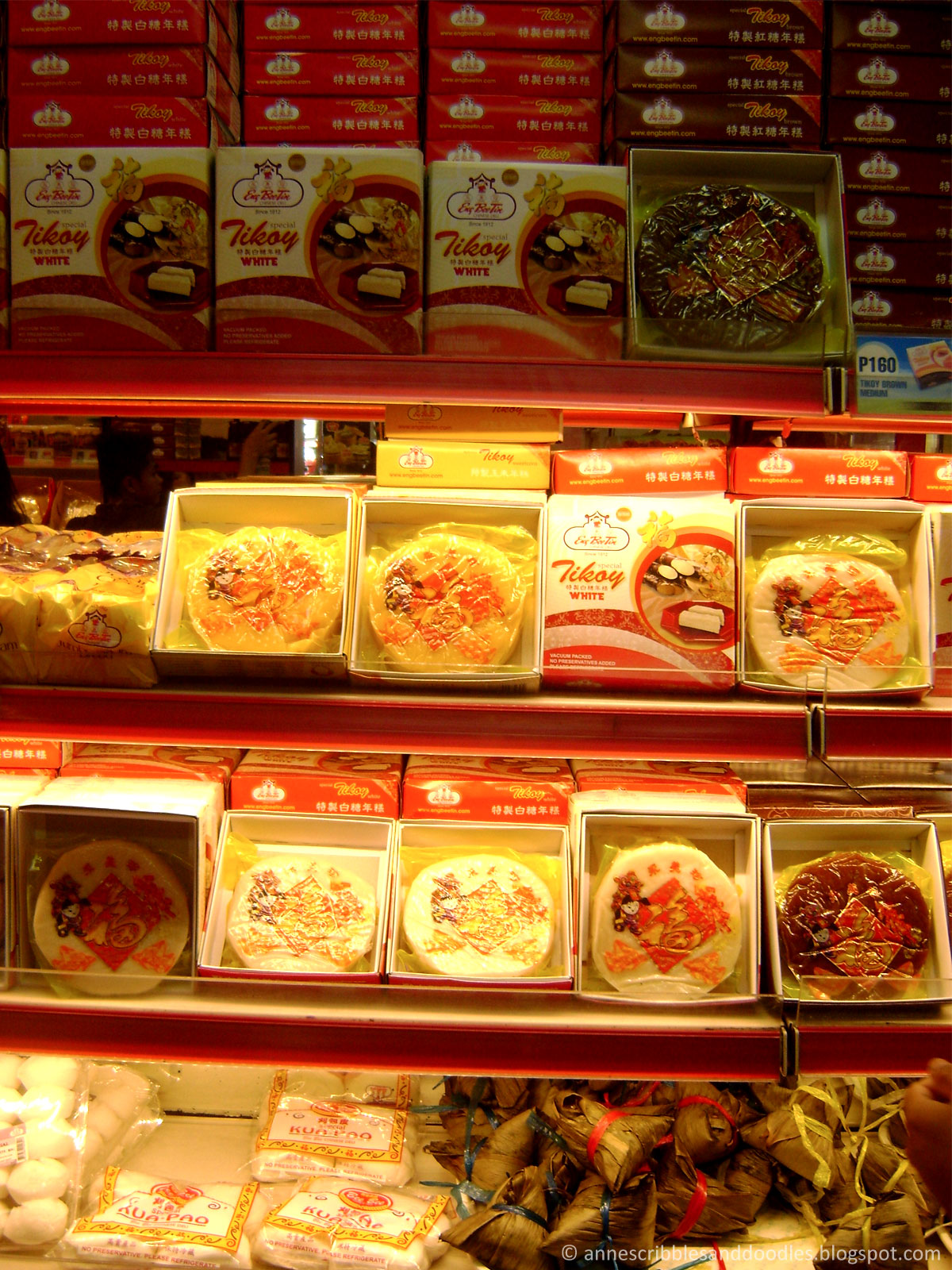
Chinky-eyed and thrifty. These two perfectly define me so I guess it wouldn't be a complete surprise if I had an ounce of Chinese blood in my veins. My maternal grandmother's side of the family has a one syllable three letter family name. Majority of the family is chinky-eyed too with eyes tending to thin out as we smile or laugh. Alas, no one knows how to speak Mandarin. Lost in translation perhaps? I don't know really but I'll stop these random bits of whatnot and get this introduction over and done with. In my previous post, I mentioned that we had this little jaunt around some of the sights and places to see in Manila. This is part two. Behold Binondo aka Manila Chinatown!
The term "Binondo" was coined after an antiquated Tagalog word "binondoc" which means mountainous. This was because the place where Manila Chinatown sits used to have a hilly landscape. It is also known to be the world's oldest China Town. Dating back to its foundation in 1594, Spanish Governor Luis Pérez Dasmariñas established it for purposes of permanent settlement for the Sangleys, a Spanish term for Chinese immigrants, who converted to Catholicism. It is through this that many intermarriages occurred paving the way for a new mestizo class called the Tsinoy or Chinoy. The first Filipino saint, St. Lorenzo Ruiz, belonged to this class with a Filipino mother and a Chinese father. Trade and commerce strive in the area such that Binondo, particularly Escolta street, used to be the country's center of commerce before Makati. I wanted to go to Binondo for two main reasons: food and splashes of color. That is what I exactly got plus a dip into the Chinoy culture.



 People of different race and religion can live harmoniously together and the Santo Cristo de Longos Shrine is proof of that. Located just on the corner of Ongpin and San Nicolas streets is the synchronicity of Catholicism and Buddhism decked with red votive candles, incense and sampaguita garlands. Legend says that a deaf-mute Chinese regained his speech and hearing after finding an image of the crucified Christ on an old well here. It was dubbed as the "Santo Cristo de Longos". The original image can be found in the side entrance of Binondo church encased in a glass. The shrine was made on the site of the very well where it was found and people can light candles, burn incense and say their prayers here.
People of different race and religion can live harmoniously together and the Santo Cristo de Longos Shrine is proof of that. Located just on the corner of Ongpin and San Nicolas streets is the synchronicity of Catholicism and Buddhism decked with red votive candles, incense and sampaguita garlands. Legend says that a deaf-mute Chinese regained his speech and hearing after finding an image of the crucified Christ on an old well here. It was dubbed as the "Santo Cristo de Longos". The original image can be found in the side entrance of Binondo church encased in a glass. The shrine was made on the site of the very well where it was found and people can light candles, burn incense and say their prayers here.




 This was the splashes of color that I needed. I'm known for my preference over soft and pastel hues but sometimes I just like seeing bold colors and details. Manila Chinatown is decked with all sorts of lucky charms or "pampaswerte" as my uncle would have it. Whether you need luck in terms of wealth, love life, health, career or whatnot, you are bound to find something here for you. Many people here in the Philippines, Chinese or not, believe in Feng Shui, a Chinese philosophical system of harmonizing oneself with their surrounding environment. I didn't buy any for such purposes though because I've always had this belief that we create our own luck. Optimism need not have a tangible symbol. Of course, that's only for me. We have our different beliefs and opinions on this matter. To each his own.
This was the splashes of color that I needed. I'm known for my preference over soft and pastel hues but sometimes I just like seeing bold colors and details. Manila Chinatown is decked with all sorts of lucky charms or "pampaswerte" as my uncle would have it. Whether you need luck in terms of wealth, love life, health, career or whatnot, you are bound to find something here for you. Many people here in the Philippines, Chinese or not, believe in Feng Shui, a Chinese philosophical system of harmonizing oneself with their surrounding environment. I didn't buy any for such purposes though because I've always had this belief that we create our own luck. Optimism need not have a tangible symbol. Of course, that's only for me. We have our different beliefs and opinions on this matter. To each his own.










 /div>
/div>














There was so much more of Manila Chinatown that I wanted to see and experience, the infamous "estero" being one. We only walked past it but didn't linger too long as we were headed to Intramuros right after. My uncle told me that the estero had numerous food stalls filled with fresh sea food choices. You can pick which ones you'd like to eat and have them cooked according to your preferences. Oh well, at least I'd have another blog entry should I go there and visit again right? Yay more food! *cue food babies in applause*
More of Out and About Manila:
Part 1: The Binondo Church
Part 3: Fort Santiago and Jose Rizal Museum




























61 comments:
I've always been curious of Manila Chinatown. Haven't been there. The place looks iconic! And ohhhh tikoy I love!
Such lovely photos! I want to go there! haha >3<
I'm following you <3
fume,
sleepy-deer.blogspot.com/
It does! I'm not a fan of tikoy though but my grandma loves it.
Thank you!
Beautiful and chic pictures
kisses
MaggieD
Fashion Blog - Maggie Dallospedale Fashion diary
WOW, amazing pics. ciao gloria
Gloriadressup
Always wanted to go to manila, thanks for sharing this post<3
follow for follow?:)
xoxo
http://hilarynirvana.blogspot.com/
Beautiful pics of an amazing place. Thx for sharing. Lovely blog here btw! Would you like to follow each other on GFC? Please let me know on my blog so I can follow back. Thank you.
xox
Lenya
FashionDreams&Lifestyle
great photos, great architecture etc, i want to go there !! :)
Thank you Maggie!
Thank you! :)
You should come and visit it then! Tick an item off your bucket list?
Thank you Lenya!
This is only a small amount of what Manila has to offer! You should see Intramuros with its old world architecture. :)
Wonderful photos, thanks for sharing this beauty!
Tanya
www.StripesNVibes.com
BlogLovin
Thanks Tanya and you're welcome!
Beautiful photos Anne! Thank you for visiting my blog. Love the fact that you share some historical facts to us also. I always wanted to go to Manila,someday hehehe
love lots,
Tin
mypoeticisolation.blogspot.com
It looks amazing! China Town here always has some really cool things. Loving the paper look of your blog too!
Raindrops of Sapphire
This is one of the places I wasn't able to visit when I went to Philippines :(
Glad I was able to read about it on your blog ! It's definitely going to be
a must see for me when I come back to the Philippines to visit !
<3,
RG @ rgmendoza.blogspot.com
Very nice post:)))
xoxo
Antonella
beautylove7694.blogspot.com .
Thank you Tine! You'll get to visit Manila someday too.
Thank you so much! I'd love to see Chinatown in other countries too and see how they differ.
Oh yes a must try! You'll get a whole lot of walking and eating here.
Thanks Antonella!
Sounds like amazing place, I especially like photo of Shanghai Fried Siopao, it looks so delicious ;)
http://crafty-zone.blogspot.com/
You really do look Tsinoy, through and through! I really love Binondo, but I hardly get the chance to go when we visit Philippines. Not enough time, and no one wants to stay in Manila. :(
Also, fried siopao is really a gift from God hahaha
Gosh what a place, there's so much colour! I love how many images of food there are in this post too haha, it's so great to have a glimpse into another place in the world that I don't have 'easy access' to :)
Gabrielle | A Glass Of Ice x
I loved your post! Your pictures are so beautiful, I love the colors of all the figures. I hope I can visit Manila one day! :D
http://perlasancheza.blogspot.com/
It tastes delicious too. :)
It's a really huge and busy city. Besides, the Philippines has 7,107 islands each one with their own charms and beauty. It's hard to pick when you're here!
Oh yes food! I hope I didn't make you hungry?
Thank you so much! I wish that you could fulfill that wish too!
omg eng bee tin!!! this for me is the best hopia ever as in ever. i know im speaking in superlatives but yes best hopia ive had my whole life. i could finish a whole pasalubong box in less than a week. ako lng nag eat.. ehhehe this post made me feel like i missed out on my manila stint. never got the courage to go to binondo. may be next time!
I feel you Isa! They are the bomb when it comes to ube hopia.
Yup! I think my favorite region is Ilocos, but I'm biased because that's where my family is from hahaha. I did love traveling further down south though. The islands there are a little more untouched and so pretty!!!
so much culture in this place!!!
i miss those chestnuts!! :D
Animated Confessions
I can no longer remember the last time that I've been here! :(
Ganda ng pictures mo Anne :D
www.jhanzey.net
I miss Eng Bee Tin and eating at Estero. Binondo is such a great place for a food trip. I hope to swing by Chinatown in my next Manila trip.
What a colorful post! I haven't been here before but I've got a taste by means of pasalubongs. Hehehe Send us a few goodies Anne! I miss you!
That's true. :)
Thank you so much Jhanzey!
I've seen quite a lot of Eng Bee Tin products sold in some groceries in Cebu. I remember seeing them at White Gold once. They had an entire rack but the prices tend to double if not triple.
I hope I don't eat those pasalubongs all up at the airport. Haha!
Oh I remembered going there few years back with a couple of friends. Since we were lost, I remembered we walked from Divisoria (or was it? Forgot na..) to this bridge that connects to Chinatown. Man, we were such noobs. Hahaha. Can't believe we walked that far. But along the way, we learned to appreciate the beauty of the place; it's like being transported to a different dimension or something.
What a fun and fascinating walkthrough! I haven't been to Binondo but the way you describe the place makes it sound so intriguing!
I guess so since it's around the area. We actually came from Divisoria and road a jeepney to Chinatown during this trip. It's not that far but on foot i think that's quite a long walk.
Really? I didn't mean for it that way but I'm glad you're pretty intrigued to want to check it out. :)
I always wanted to go to China Town! I really love the photos. Very colorful and full of life. I wanna go there and just tambay there look for something to buy then eat siopao or tikoy ^_^
I haven't been to Manila Chinatown before but that looks like a place my mother would have a field day in. The house of the best tikoy and hopia being her favorite. And Haw flakes! My dad loves those. Thanks for sharing your adventure! :)
Thanks Channel! Don't forget the hopia and the fresh seafood at Estero!
You're welcome Ashley and thank you! Tikoy and hopia seems to be a favorite among many.
FOOOODDDDD!! :) I may not have inherited my Lola's chinese heritage and features but there is still a portion of me that unconsciously roots for Chinese food like Siopao and Tikoy. Every new year or even the lunar new year, i would always buy tikoy, hopia and round fruits and consume noodles believed to be a sign of Long Life :) I will definitely go to Binondo once I set foot in Manila again. :)
Oh yes the undying custom of round fruits, noodles and sticky dishes!
our china town isn't as vibrant or organized as in MAnila or Davao for from history, the chinese in Cebu integrated and was able to expand their businesses beyond the 'chinatown' but yeah the chinese products looks so awesome!
Indeed. I also like how it transports you into a different place once you step into the gate.
I am always amazed with places that makes you feel like you're in another world and indeed Binondo is really vibrant. I've never been to a china town and I hope I could have a photowalk there too like you did. Nice pics! :)
I bet you will take even better photos Emjae!
I have never been to the Philippines so this post is really interesting for me! Your pictures are so bright and colourful, I'm going to follow your blog :-)
Awww thank you so much Eimear! I hope you get to visit someday.
I think I need to put this on my travel wish list! Thanks for sharing.
http://xoxobella.com/
You're welcome Bella!
Post a Comment